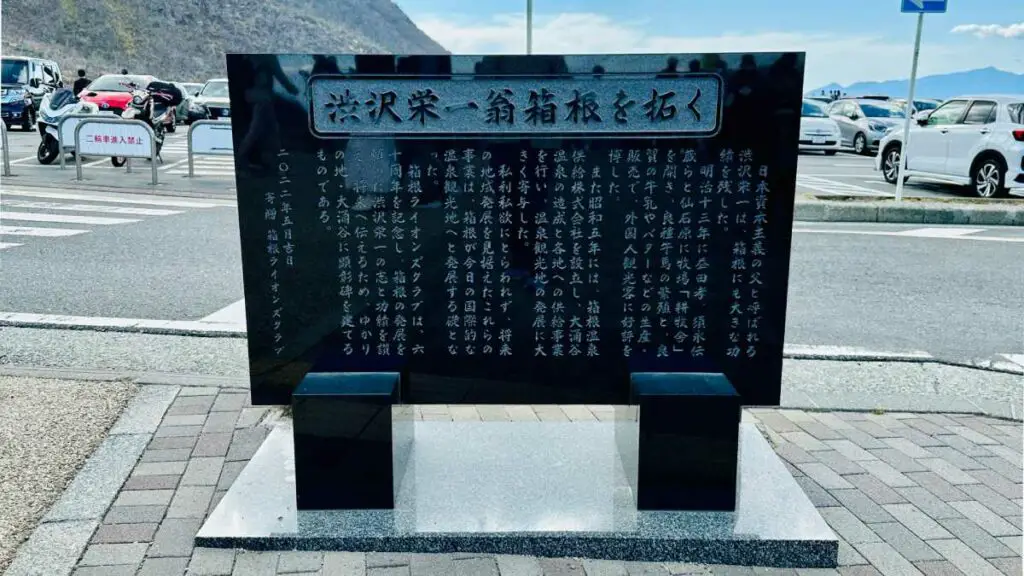You can’t talk about Japan without talking about the Japanese food. For the Japanese people, food is an art, and they surely make you notice that in their preparation, their selection of ingredients, and their presentation. The Japanese prepare their food according to the seasons so you will never have the same dish in the summer and in the winter as the ingredients will certainly change. For this post, I decided to choose some traditional foods I like, and some that I will probably taste in my trip to Japan (or not).
Other than the famous sushi or noodles, Japan has a variety of different food recipes to taste.
If this introduction opened your appetite to know more about Japanese food, just keep reading to discover some extraordinary dishes that you can either love or run away from as fast as you can. 🙂
Soba
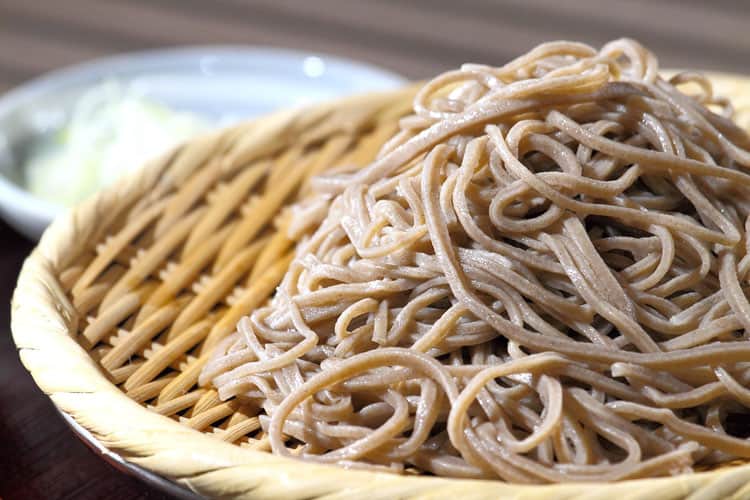
Soba (蕎麦) is one type of Japanese noodle. These are thin noodles made from buckwheat flour that are very common throughout Japan. When Japanese cultivate soba, they can harvest it 3 months later so no wonder this is a very common dish in Japan.
There’s no special season to eat soba noodles in Japan because you can eat them hot or cold. In the summer, they are usually served drained and chilled while during winter they are served with some kind of broth.
Even if soba can be eaten just like that, they usually have some extra topping based on the season.
Here’s a small list of some soba dishes you might want to try in Japan:
Hey, check out these recommendations I have for you!
Before going any further, take a look at some of the recommendations I've handpicked for you. I think these are essential items you should have on your trip to Japan. You can check them out and buy them directly from Amazon.
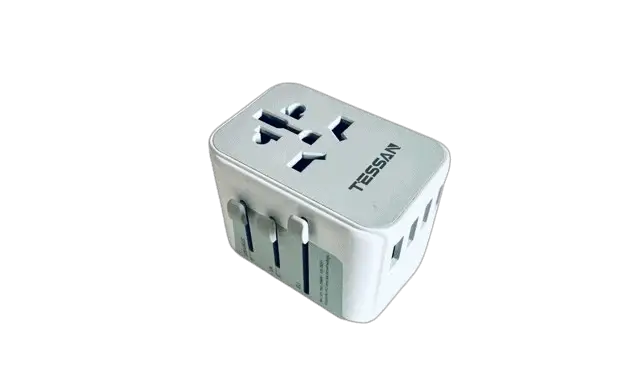
|

|

|
| A universal travel adapter | A 10,000 mAh power bank | A travel adapter and converter |
- Mori soba (盛り蕎麦): Cold noodles served on a plate
- Zaru soba (笊蕎麦): Cold noodles with shredded seaweed on top
- Hiyashi soba (冷やし蕎麦): Cold soba with several toppings where you pour on the broth before you eat
- Soba maki (蕎麦巻き): Cold soba wrapped in seaweed like sushi
- Kitsune soba (きつね蕎麦): Hot soba served with fried tofu on top
- Tempura soba (天麩羅蕎麦): Hot soba served with fried vegetables or even shrimp on top
- Nameko soba (なめこ蕎麦): Hot soba served with nameko mushroom
If you’re willing to try soba dishes in Japan, the possibilities are endless and these are generally very affordable dishes. Plus, soba noodles are good for your health, so this will be a perfect choice for your trip.
Sushi
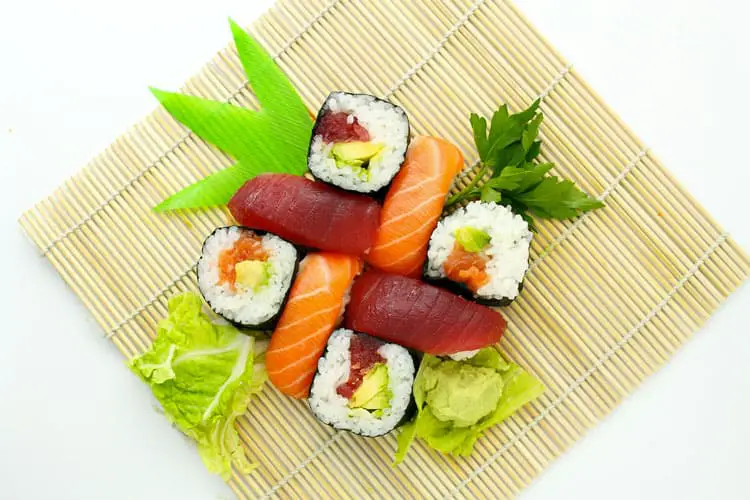
Sushi (すし or 寿司 or 鮨) is the most famous Japanese dish outside Japan and you probably already tasted it, but, believe me, there’s nothing like real sushi in Japan. Often, when you try a traditional dish outside its country, it is adapted to fit the new country’s likes.
The traditional ingredients of sushi are the typical rice prepared with vinegar, accompanied most of the time by vegetables and seafood like squid, eel, yellowtail fish, salmon, and tuna. When eating sushi in Japan, you will often have ginger, wasabi, and soy sauce too.
There are different types of sushi in Japan that you might want to try. Here’s some of them:
- Makizushi (巻き寿司): This is probably the most famous type of sushi for foreigners in Japan. It is a cylindrical piece wrapped in nori (a type of seaweed), but it can also be wrapped in a thin omelet, soy paper, and even cucumber.
- Inarizushi (稲荷寿司) is simply a pouch of fried tofu with sushi rice inside.
- Narezushi (熟れ寿司): Also known as fermented sushi, it is a traditional form of fermented sushi. There’s a huge preparation of the fish that takes six months, and then you can eat it.
- Chirashizushi (ちらし寿司): This is not like the sushi you are used to seeing. The rice is served in a bowl and on top there is a variety of raw fish and vegetables
- Oshizushi (押し寿司): This is a sort of sushi that is pressed using a wooden mold to form a block-shaped piece. It is a specialty from Osaka.
- Nigirizushi (握り寿司): It is also a sort of pressed sushi, but this one uses the hands until you get an oval-shaped ball. On top of it, you will usually find a small piece of raw fish like tuna or salmon, for example.
Ramen

Ramen (拉麺 or ラーメン) is one of those foods you will find everywhere in Japan, and most importantly, it is very inexpensive. Ramen is a sort of soup with noodles inside. It is usually made of meat broth but you can also use fish broth.
There’s a huge variety of ramen in Japan depending on the ingredients and even the region (not all types of ramen are available in one region). Ramen can be categorized mainly using 2 things: the type of noodles and the type of broth.
Ramen noodles are made from wheat flour, water, salt, and kansui (alkaline mineral water), and they can be thin, thick, ribbon-like, straight or even curly.
As far as the broth is concerned, there are several types of ramen:
- Shio ramen (塩拉麺): It uses a yellow color broth made of vegetables, fish, chicken, or seaweed. It is the oldest type of ramen.
- Tonkotsu ramen(豚骨拉麺): It uses a white-colored broth made of pork bone.
- Miso ramen (味噌拉麺): It combines mainly the miso soup with fish broth or oily chicken. The broth has a thick aspect.
- Shoyu ramen (醤油拉麺): It uses mainly soy sauce for the broth (brown color).
- Kare ramen (カレーラーメン): It is simply ramen noodles in curry soup.
All these types of ramen have several toppings which create even more variety. The most common toppings you’ll find are:
- Sliced pork
- Green onions
- Mustard leaves
- Boiled eggs
- Bamboo
- Beans
- Dried seaweed
Keep in mind that there are many more than these toppings, so don’t be surprised with all the variety you can find in Japan.
Onigiri
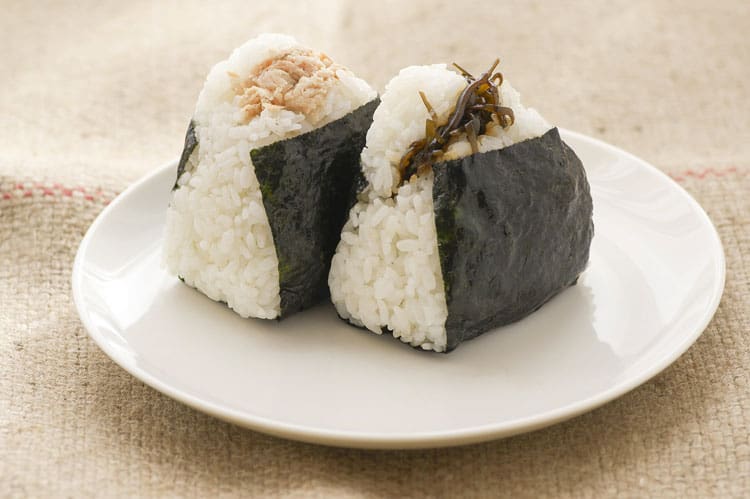
Onigiri (お握り or 御握り) is commonly known as Japanese rice balls. Most of the time, they have a triangular shape, and they are made of rice wrapped in a seaweed called nori. They are generally filled with some sort of salty ingredient that acts as a natural preservative, like salmon, dried tuna, pollack roe, and even some kind of kelp.
Dreaming of Japan? Here’s your go-to guide for a great trip.
Download Free Guide
The most usual Onigiri fillings you will find in Japan are:
- Many kinds of dried food, but especially dried fish
- Small pieces of fried food
- Some kinds of roe like pollack roe, flying fish roe and many others.
- Braised pork (Kakuni)
- Pickled fruits and vegetables
- A mix of viscera and small pieces of meat (Shiokara)
- Seafood, seaweed, or meat shimmered in soy sauce (Tsukudani)
- Fermented soybeans
This dish is extremely popular in Japan so don’t be surprised if you find more different kinds of onigiri. My personal favorite is the one with pickled fruits, but the one with fried food is also excellent.
Sashimi
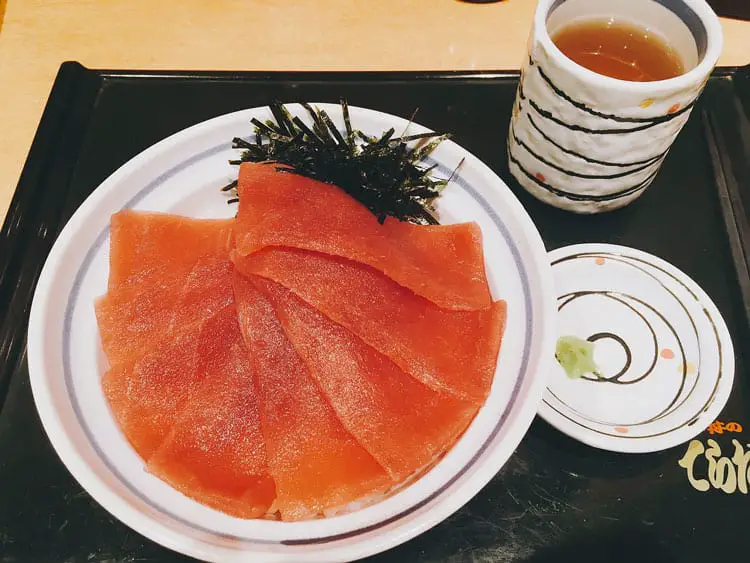
Sashimi (刺身) is based on sliced pieces of fresh raw fish, although it’s not unusual to find sliced meat. This dish is generally served with white Asian radish and a dipping sauce like soy sauce. There are also some indispensable condiments like wasabi, ginger and garlic.
Sashimi might seem an incredibly simple dish, but there are special techniques used to cut the fish or meat. As a general rule, you won’t see fish and meat being sliced the same way. The slices can be more or less thick depending on the fish or meat, and they generally go from less than 2 mm up to 10 mm. This is an important thing to preserve and highlight the flavors and texture.
When trying sashimi, please make sure you do it at licensed restaurants because eating raw fish and meat can be dangerous for your health due to bacteria that are normally present in food, but that are often destroyed during cooking.
Fish is not my favorite dish, so I guess that I’ll never try this in Japan, but for those who love fish, it might be an interesting experience.
Takoyaki
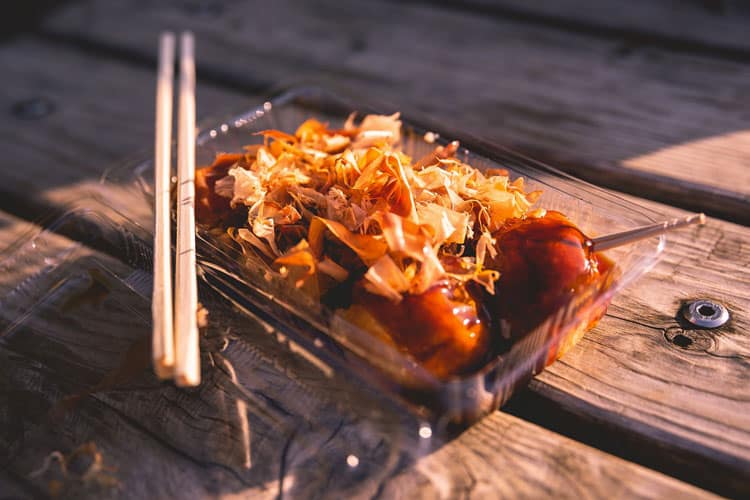
Takoyaki (たこ焼き) is a sort of Japanese snack that has the shape of small balls. Normally, these balls are filled with tako (octopus), tempura, ginger, and green onions, and then brushed with a takoyaki sauce and mayonnaise. The balls are served with green seaweed and bonito flakes (made from dried and fermented bonito fish).
Despite being a relatively simple dish, it is extremely good. The taste is awesome, and there are no weird ingredients. If you are afraid of tasting weird things, this dish is a good option 🙂
Gyoza
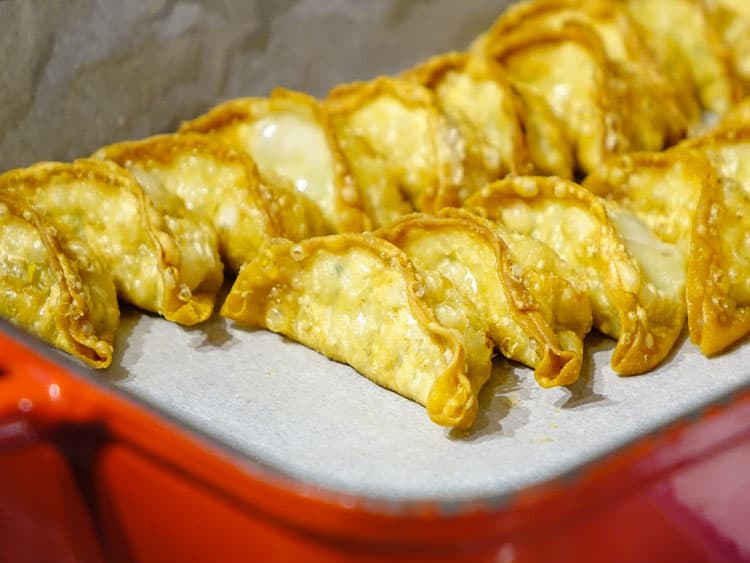
Gyoza (餃子) are a sort of dumplings that originated in China but are commonly eaten in Japan too. They are made of ground meat inside a piece of dough and sealed at the edges. Sometimes, vegetables can also be added to the meat and even replace it. This dish can be cooked either fried or boiled. Gyoza is often served with a sort of soy sauce or chili oil.
Miso Soup
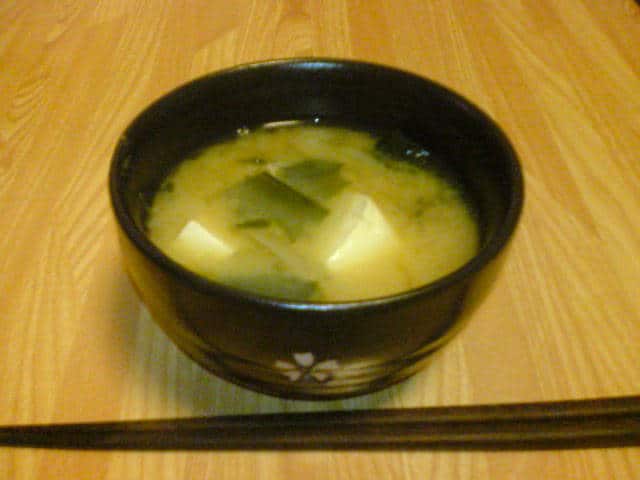
Miso soup (味噌汁) is probably the most famous dish in Japan because most Japanese eat it at least once a day. It is made essentially of a stock called daishi and miso paste. The miso paste is made using fermented soybeans with salt and a specific fungus, and it is usually classified in one of these 3 types:
- White miso or shiromiso (preferred in Osaka, Kyoto, or Kobe)
- Red miso or akamiso (preferred in Tokyo)
- Mixed miso or awasemiso
The miso soup is then completed by some sort of topping which can be almost any ingredient like mushrooms, onions, seaweed, potatoes, tofu, etc.
Tonkatsu
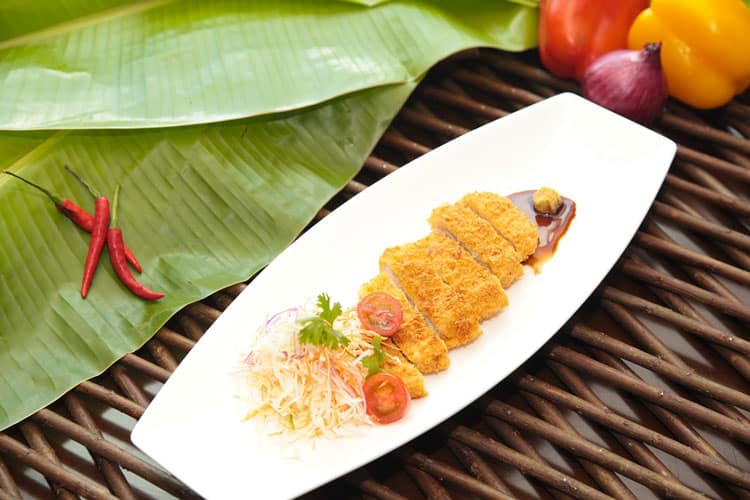
Tonkatsu (豚カツ, トンカツ or とんかつ) is made of pork cutlet that is coated with bread crumbs and then fried in oil. It is usually served with shredded cabbage and Japanese Worcestershire sauce.
Like most Japanese food, variety is always important, and even when you have a simple dish like this one, the Japanese are always capable of giving you several choices. This way you might come across some variants such as:
- Hamu katsu (ハムカツ): uses ham instead of pork cutlet
- Menchi katsu (メンチカツ): uses minced meat patty
- Chicken katsu (チキンカツ): uses chicken
- Gyu katsu (牛カツ): uses beef and it is popular in Osaka and Kobe
Yakitori
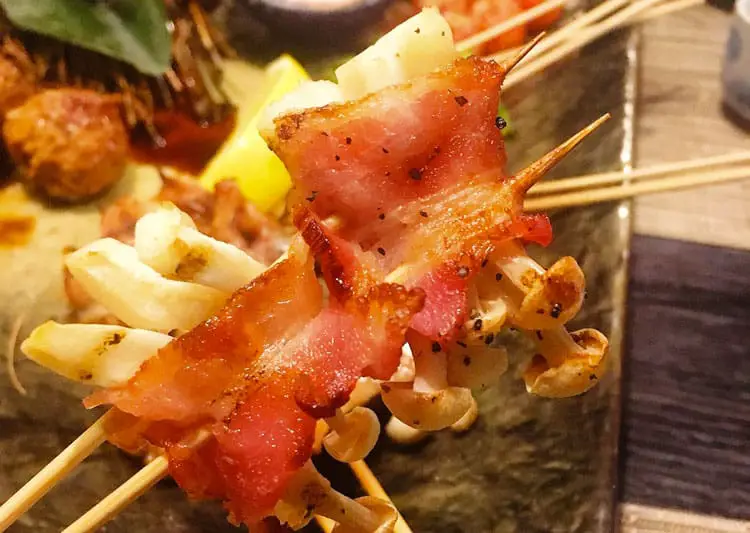
Yakitori (焼き鳥) is skewered chicken grilled over a charcoal fire, but it is extremely tasty. It is usually seasoned with salt or sweet sauce. Yakitori is a very common dish in Japan. You can find it in festivals, small stalls in the streets, and in specialized shops called yakitori-ya.
Depending on the chicken’s part that is used, yakitori can take other names like:
- Yotsumi (四つ身): small pieces of chicken breast
- Tsukune (つくね): chicken meatballs
- Momo (もも): chicken thigh
- Sasami (ささみ): breast meat
- Negima (ねぎま): chicken and spring onion
- Toriniku (鶏肉): all sorts of white meat
- Tebasaki (手羽先): chicken wing
- Torikawa (とりかわ): crispy chicken skin
- Bonjiri (ぼんじり): chicken tail
- Sunagimo (砂肝): chicken gizzard
- Nankotsu (なんこつ): chicken cartilage
- Kokoro (こころ): chicken heart
- Rebā (レバー): liver
- Shiro (シロ): chicken small intestines
Tempura
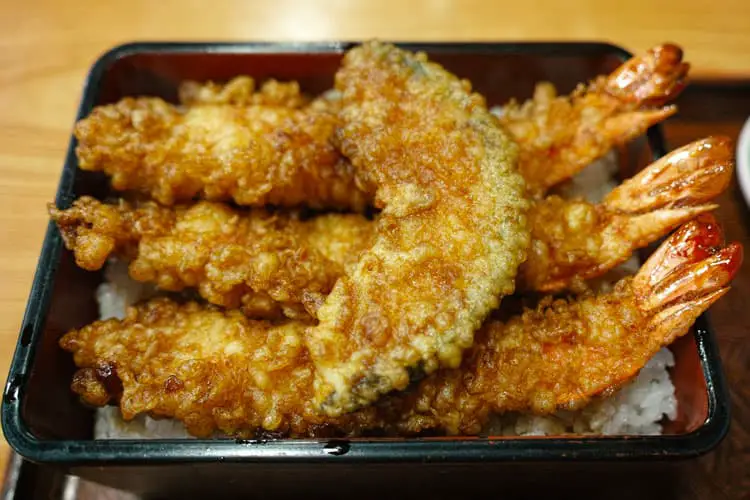
Tempura (天ぷら or 天麩羅) is made of vegetables or seafood that are coated with batter and then fried in vegetable oil or canola oil. Although this is a simple dish, it is also extremely common and appreciated.
The most common type of tempura is ebi tempura which uses shrimp, but there are other seafood like:
- Squid
- Crab
- Eel
- Scallop
- Catfish
- Pollock
- Ray
- Japanese sea bass
- Japanese whiting
Regarding the vegetables used in tempura, you will generally find some of these:
- Carrot
- Potato
- Sweet potato
- Shiso leaf
- Onion
- Broccoli
- Bamboo shoots
- Eggplant
- Green bean
- Mushroom
Natto
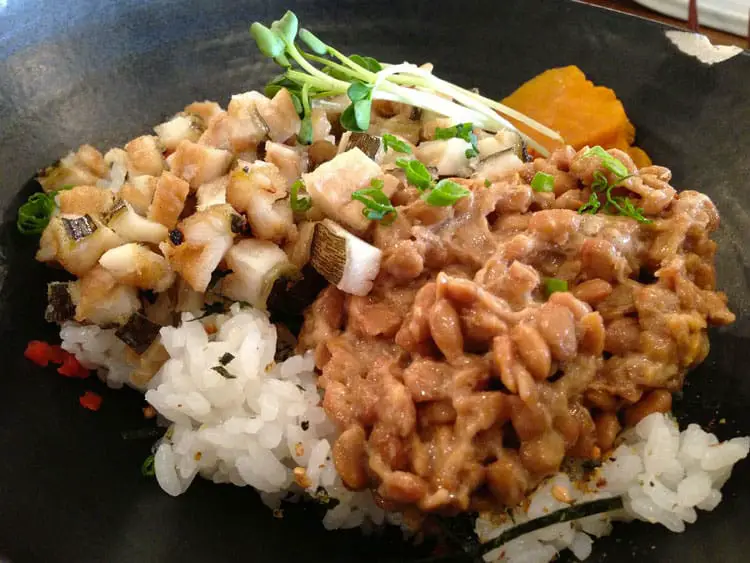
Nattō (納豆) is a peculiar traditional dish in Japan because of its sticky texture, strong flavor, and smell. It is made of fermented soybeans and it is usually served on rice or with mustard and long onions. Even if it is a little weird dish, many Japanese like it, and those who don’t still eat it anyway because it is believed to be really healthy.
I think I’ll pass this one and try some more pleasant dishes.
Omurice
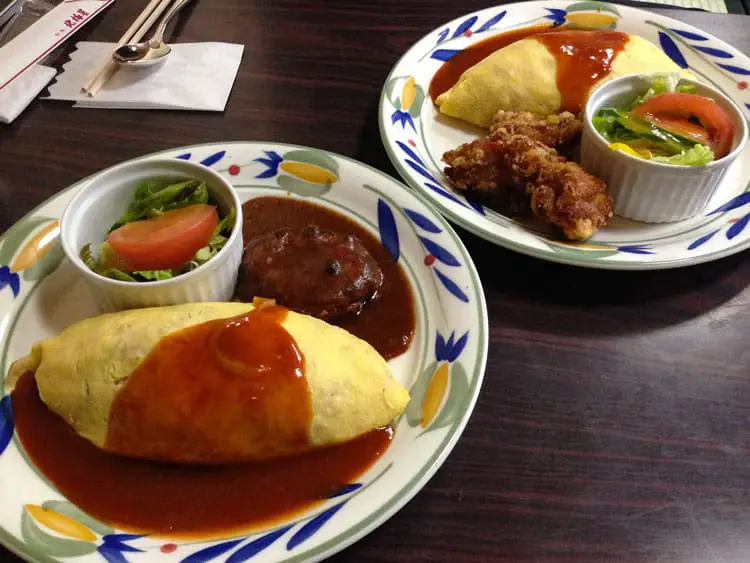
Omurice (オムライス) is a Japanese dish that was influenced by the Western culture. It is an omelet with fried rice, vegetables, and meat inside, but it is incredibly good. Although it is particularly appreciated by children, adults also eat omurice.
Like all the great food in Japan, this dish benefits as well from several varieties to our great pleasure. The usual way to prepare omurice is using rice chicken (fried rice, chicken, and ketchup), but the ingredients added to the rice may vary according to the season and region.
Additionally, you can also find omurice with fried soba inside instead of rice which is called omusoba. Yes, the Japanese love rice and noodles. 🙂
Japan’s waiting for you! Get your quick guide for the best trip.
Grab It Now
Udon
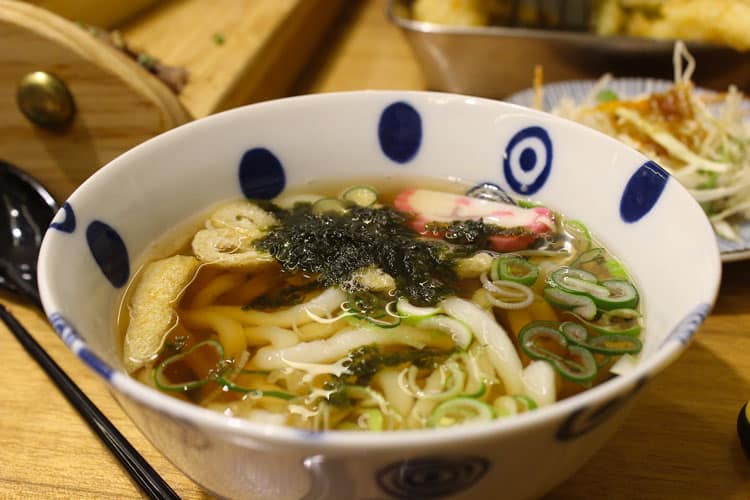
Udon (うどん) is another extremely famous type of noodle just like soba or ramen. It is a thick wheat flour noodle, boiled in a pot of hot water, and usually served in soup. Over the noodles, you will usually see some chopped scallions, but it is also common to see tempura or fried tofu, for example.
Most of the time, these noodles are served hot in the winter and chilled in the summer.
Udon noodles don’t taste the same throughout Japan because each region has its way of preparing them with different ingredients. There’s a particular difference between eastern and western Japan that you should be aware of. The broth used in eastern Japan is based on dark soy sauce, while the broth in western Japan uses light soy sauce. Therefore, the taste can be a lot different. Also, is not uncommon to see Udon noodles served in curry broth.
Here’s a small list of some soba dishes you might want to try in Japan:
- Kake udon: Probably the most popular type of udon, it is served in a broth with sliced onions and a slice of cured surimi.
- Tempura udon: It is simply udon topped with some sort of tempura (especially seafood).
- Tsukimi udon: Udon served in soup with raw egg.
- Kitsune udon: Udon served with deep-fried tofu.
- Kare udon: Udon served in a curry broth, usually with meat or vegetables.
- Hadaka udon: Noodles only, without broth or topping.
- Zaru udon: Chilled udon with seaweed on top.
These are just a few examples of udon, but there are many more that I didn’t mention. No wonder there are restaurants specializing in noodles only.
Japanese Rice
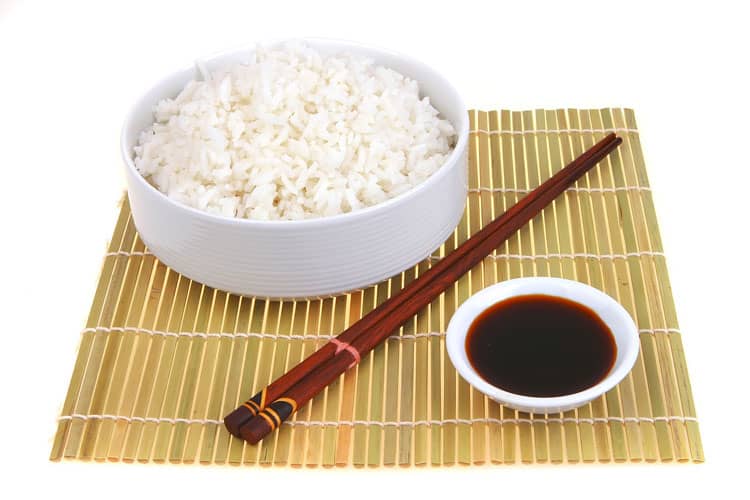
The Japanese rice is divided into 2 types: ordinary and glutinous rice. The most common type (ordinary rice) is known as uruchimai (粳米) and it’s the base of most Japanese dishes. It is easily recognizable because of its short translucent grains. This type of rice is sticky making it perfect for the use of chopsticks, otherwise, I bet we would have a hard time eating it.
The other type of rice (glutinous rice) is known as mochigome (もち米) and it’s used more for special dishes. Even if it is also a short-grain rice, this one is not translucent but opaque. It is also stickier than the ordinary rice.
Ordinary rice can be found everywhere, almost in every typical meal, but glutinous rice is mostly used for the Japanese rice cake, festive dishes like sekihan (rice and red beans), or even traditional snacks. If you’re a fan of rice, you will be completely satisfied with your meals in Japan.
Nabemono
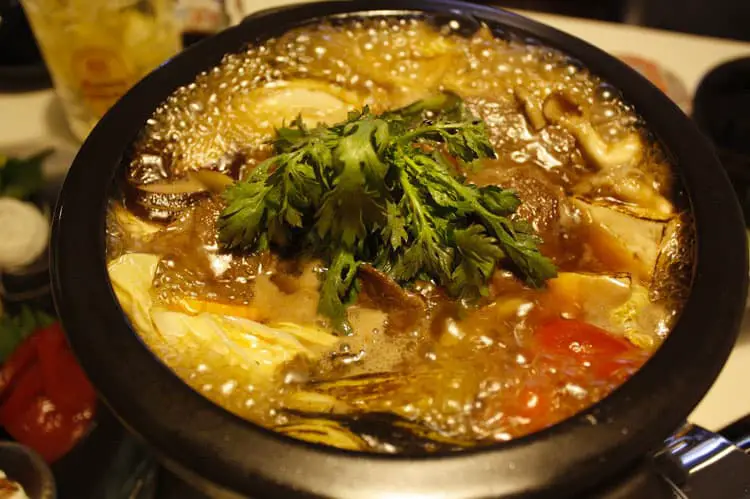
Nabemono (鍋物 or なべ物) is essentially a typical Japanese stew. This is a very friendly dish because it is usually cooked in the center of the table and everyone picks what they want from the pot. So, if you’re not traveling alone, this can be a good option for a great shared experience of the Japanese food culture.
In general, there are 2 types of stock for nabemono: light flavored stock to preserve the original taste of the ingredients and strong flavored stock.
Like many Japanese dishes that we saw, Nabemono also has several varieties that you can taste during your trip. So I selected a small list of Nabemono recipes you might come across in Japan:
- Chankonabe (ちゃんこ鍋): It is the most complete nabemono because it has more ingredients than any other. You will find meatballs, chicken, tofu, vegetables and udon (noodles). It is also known as the food of sumo wrestlers, as it has a great caloric intake.
- Oden (おでん): It is a Japanese stew with boiled eggs, radish, konjac plant, and fishcakes.
- Yosenabe (寄鍋): It is usually made using miso soup and other ingredients like meat, egg, vegetables, tofu, or seafood, for instance.
- Motsunabe (もつ鍋): It is made using beef of pork offal, cabbage and garlic chives.
There is also a particular specialty of Osaka that I don’t feel like tasting because of the ingredients, but I wanted you to know that it exists. It’s called Harihari-nabe (はりはり鍋) and it is made of whale meat and Japanese mustard.
Ikayaki
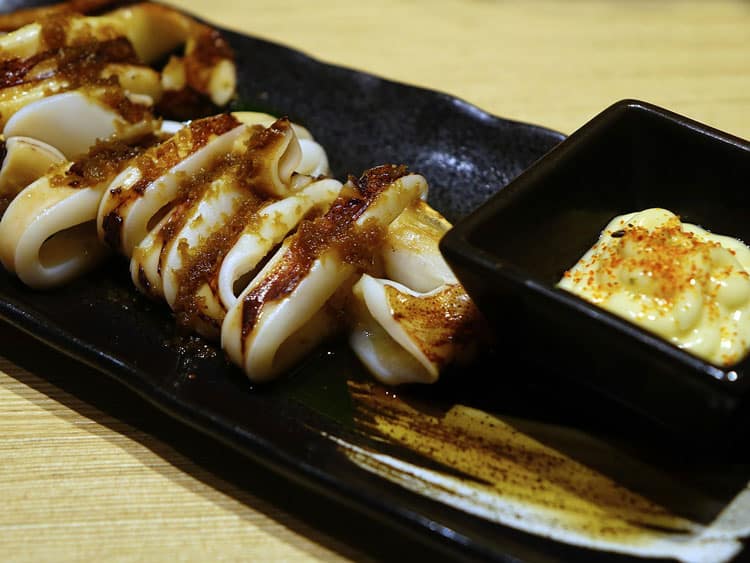
Ikayaki (can be written いか焼き, イカ焼き or 烏賊焼) is a kind of traditional fast food in Japan. It is a grilled or baked squid served with soy sauce on top. There are different types of ikayaki where you can get one or more tentacles, the body rings, or even the whole squid body, but don’t worry, when you get the whole body, there are no entrails in it.
The most common variety of this dish is the Osaka specialty which looks more like a squid pancake. It is made of chopped squid, of course, but it is inside a hard dough folded like crêpes and then pressed between 2 iron plates.
If you visit Japan during festivals, you will also find grilled tentacles in a stick everywhere since it is a popular festival type of food. And it tastes really good.
Conclusion
I hope you enjoyed this preview of what you can expect from Japanese food on your next travel. Some dishes seem incredibly tasty and others are very particular, specially designed for the courageous. So what was your favorite dish on this list? Which one are you willing to try once you get to Japan? Feel free to share your thoughts in the comments below.
I leave you now with a small tip for finding cool restaurants in Japan. This is a cool website called Tabelog that is used by locals to find the best places to eat (available in English). And if you want to book some food-related experiences in advance for your travel, you can find a good catalog on Klook website.

